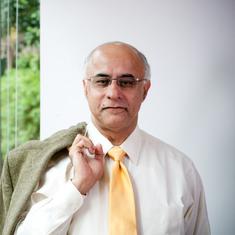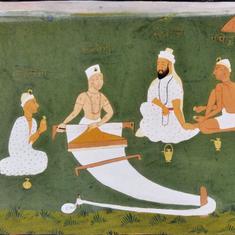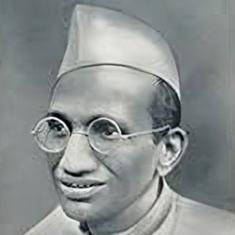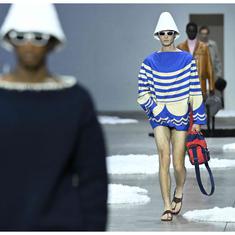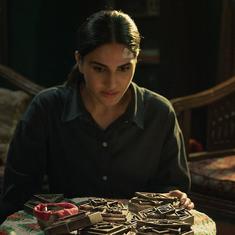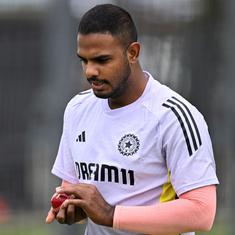India’s selectors and coaching staff took a big decision on Friday by dropping former skipper Sardar Singh from the squad for the Hockey World League Finals, scheduled to start in Bhubaneshwar, Orissa, from December 1.
While the call to drop one of the country’s most influential midfielders of the last decade for such an important tournament may have come as a surprise, it was definitely not out of the blue and anyone who has followed Indian hockey over the last few years would have known that things could come to such a point sooner or later.
“Sardar played the Asia Cup and he played the combination with Harmanpreet Singh at the back, and now we want to see the combination of Harmanpreet with Birendra Larka at the back,” said India’s chief coach Sjoerd Marijne while explaining the move. “We want to experiment at the back and try out different combinations.”
Failed to impress
Marijne’s explanation of rotation and trying out combinations would probably hold ground in any lesser tournament. But this is the Hockey World Finals and that too on home turf. It is difficult to digest that the team management would be willing to experiment with the combination and not to field their best team in the tournament.
That simply makes one reach a conclusion that probably the team management doesn’t think that Sardar has managed to impress them in the withdrawn position he was fielded in the Asia Cup and they can’t take any chances with him for now.
There is no doubt that Sardar has been one of the best midfielders in world hockey since the turn of the century and also led India to the 2014 Asian Games gold, ending the country’s 16-year wait for the title.
But even for those who were in Incheon, Korea, to witness India’s triumph over Pakistan in the shoot-out, there were clear indications that Sardar would have to reinvent himself to be relevant in the team set-up.
It was pretty apparent that the then coach Terry Walsh and even quite a few players felt that they were being slowed down and their structure was being affected with Singh sitting in the middle of the field. He was not showing the same movement and urgency in playing the ball around.
The theory got further credence when Singh was rested for the six-nation Champions Trophy in London in 2016, from where the team returned with a silver medal under goalkeeper PR Sreejesh. The midfielder lost his captain’s armband soon afterwards. Former coach Roelant Oltmans had first spokenabout how Sardar’s holding the ball slightly longer was affecting the team but he later denied it while justifying the decision to move him out of the midfield and put him in the front line for the Rio Olympics.
Singh failed to make a mark as a forward and returned to his favourite position soon after. He was the best Indian outfield player in their 2016 Asian Champions Trophy-winning run in October that year.
But these performances have been few and far between, and not against European teams known for their ability to run down opponents with speed and precision.
Off-field issues
Since then, Oltmans and the selectors started “resting” him for certain tournaments to give chance to youngsters and that policy has been continued for over a year. Sardar’s off the field problems in which he was accused of sexual harassment by a British-Indian hockey player had also started becoming a distraction for the team.
The case came to haunt Sardar even during the Hockey League Semi-finals with International Hockey Federation president Narinder Batra first publishing a Facebook post accusing the English police of purposely harassing the midfielder by calling him for questioning just before the team’s encounter against Pakistan. He had to latter issue an apology for the same.
Though the coaches and players have never spoken about it in public, there have been murmurs that Sardar’s fixation with playing in the midfield wasn’t in the interest of the team.
So when Marijne took over from Oltmans and decided to take the views of the players on team-building for the upcoming 2020 Olympics, it was clear that Sardar would have to reinvent himself and also be more acceptable to the team members.
The Dutchman moved Sardar to the sweeper role in the Asia Cup, allowing him the luxury of taking up his time to build up a move from the back. He wasn’t spectacular in that position but India still managed to sail through to the title against relatively weak opposition. Despite that, one would have hoped that the team management would stick to this arrangement for a little longer.
We don’t know whether Sardar himself didn’t like playing in the new position or the management wasn’t happy with his performance and didn’t want to take a chance at the Hockey World League Finals.
What we definitely know after Friday’s decision is that Sardar is no longer a first choice in that squad sheet for major tournaments.
At 31, Sardar isn’t over the hill and can still contribute a lot to the Indian team with his experience and the uncanny ability to find gaps. But if he wants to return to the Indian squad for the Asian Games and the World Cup next year, he would definitely have to reinvent himself and play according to the needs of the team.


